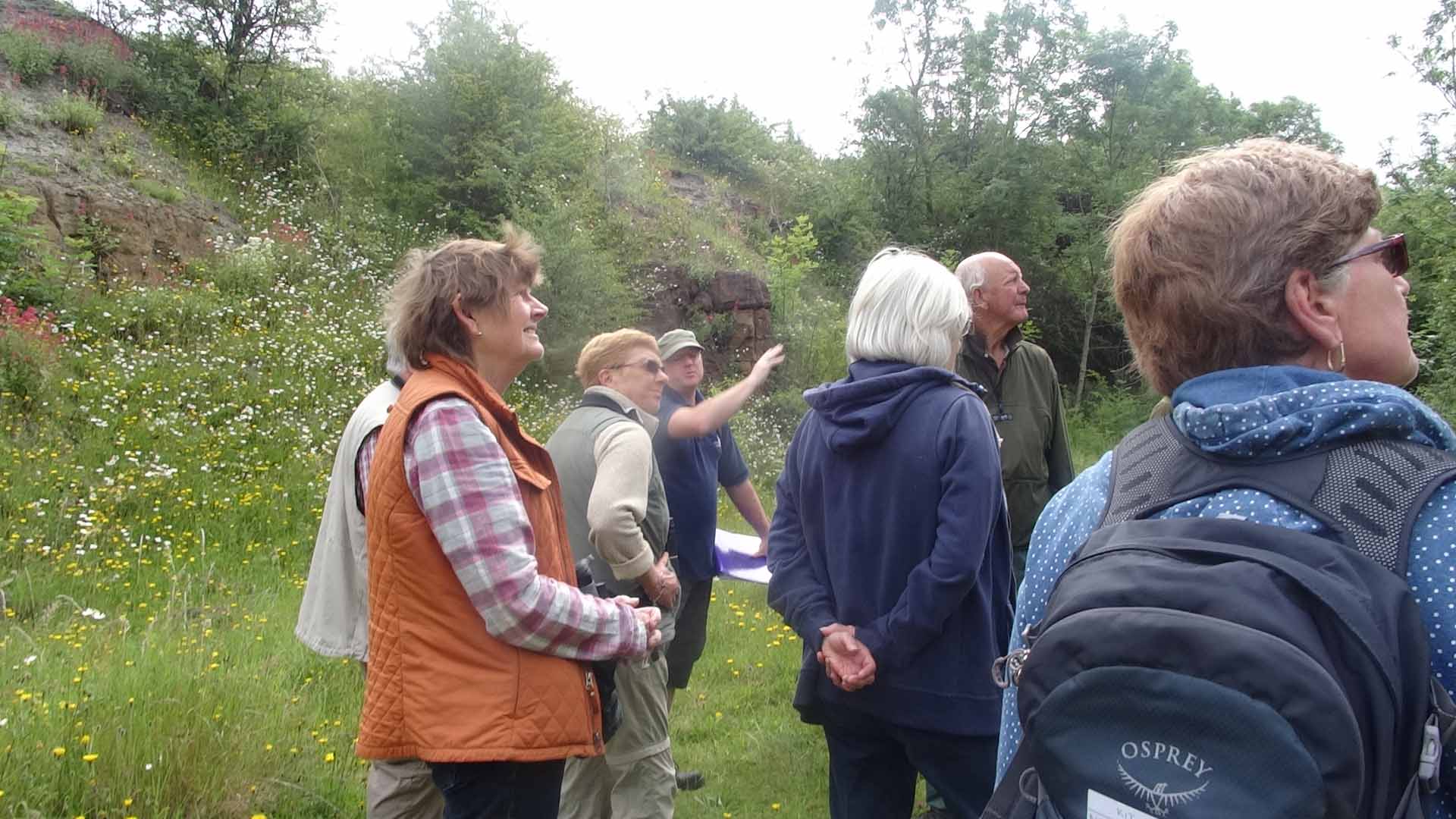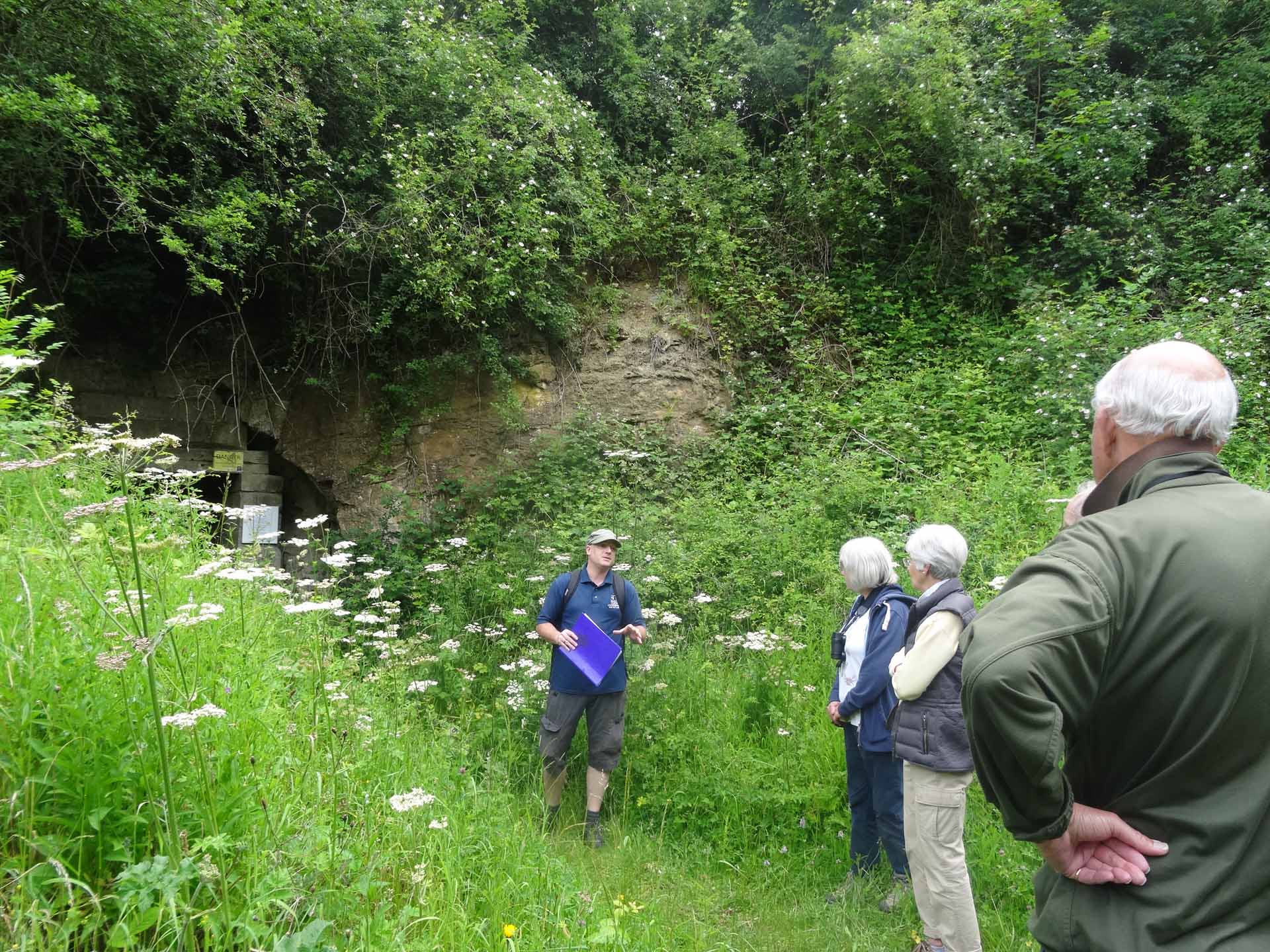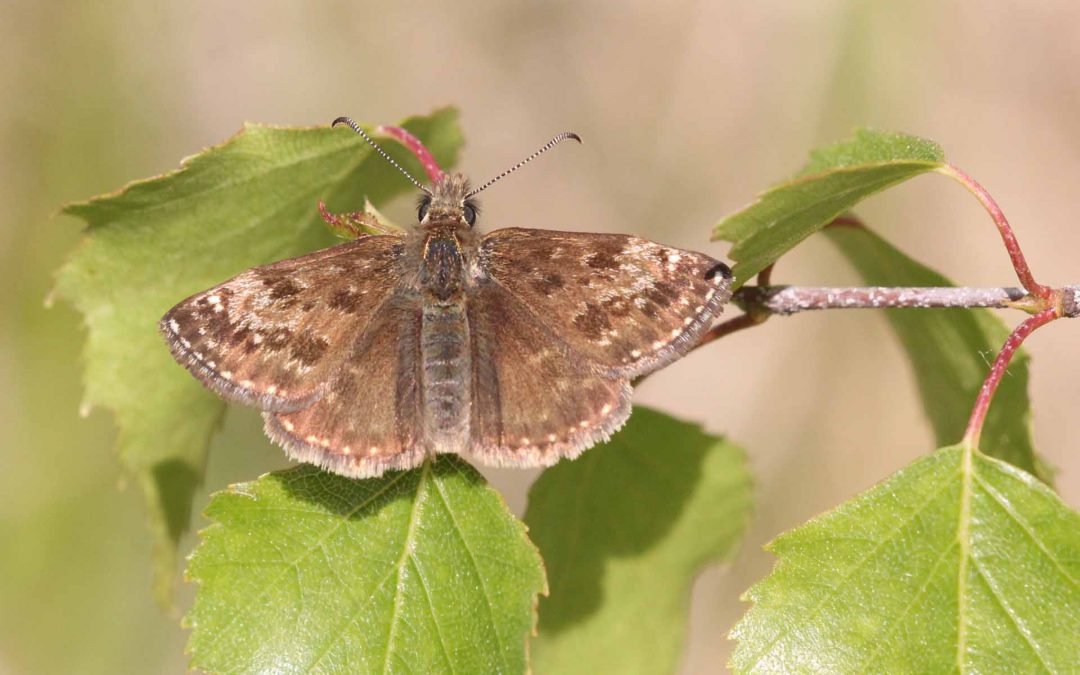Visit to Holwell Reserve Sunday 23.June
On a pleasant morning a group pf 14 members assembled on the verge outside the old quarry reserve at Holwell.

It was the open day of the reserve, so there were a number of other visitors, but an advantage to us was that many of the plants were labelled!
Our leader was John Bristow, conservation Officer for LRWT, and a member of our committee. One of his responsibilities is to look after this reserve, so we were privileged to have his input. The quarry has been looked after by LRWT since 1973, after work ceased in 1957, and it is now a well established reserve.

We began by looking at the entrance to a well known and very active bat hibernaculum, which hosts Natterers, Daubenton, Whiskered and Brown long eared bats where “swarming” takes place. This phenomenon happens in the autumn, not at dawn or dusk, but in the middle of the night, and involves numbers of male and fewer female bats, some from distant roosts, flying round the entrance . There have been 3 possible reasons suggested why this happens. It may be a way for young bats to familiarise themselves with hibernaculum sites, or perhaps to assess the suitability of the site, or thirdly to allow an opportunity for male and female bats to give opportunities for mating between individuals from distant sites, to allow gene mixing to improve diversity. None of these theories has been proved, so it remains something of a mystery!
We continued around the reserve, looking at botany, the plants seen including numbers of bee orchids, viper’s bugloss, greater plantain, weld, yellow rattle, ragged robin and many others.
We also looked at a large active badger sett in a spinney, and had discussions about the vaccination programme against tuberculosis.
Butterflies included common blue – a large colony present which feeds on bird’s foot trefoil, Meadow brown, and speckled wood.
We followed a circular walk, enjoying birdsong from goldfinch, chiffchaff, willow warbler and blackcap, and passed through varied environments, open grassland with delightful botany, managed to control coarse grasses, scrubby woodland, established woodland and marshy streams and ditches.
After an enjoyable morning we reached the area beyond Ralph’s wood, hills and hollows with ant hills, where we saw a green woodpecker, and discovered colonies of Field, Green and Lesser Marsh grasshopper, and a very large thistle later identified as musk thistle.
By this time we were all feeling very hungry, having walked, talked and observed for several hours, and so we returned to the entrance where a stall was serving coffee and snacks, which some members were able to enjoy.
Many thanks are due to John for his able leadership, and for giving us his time. It was a thoroughly enjoyable morning.
